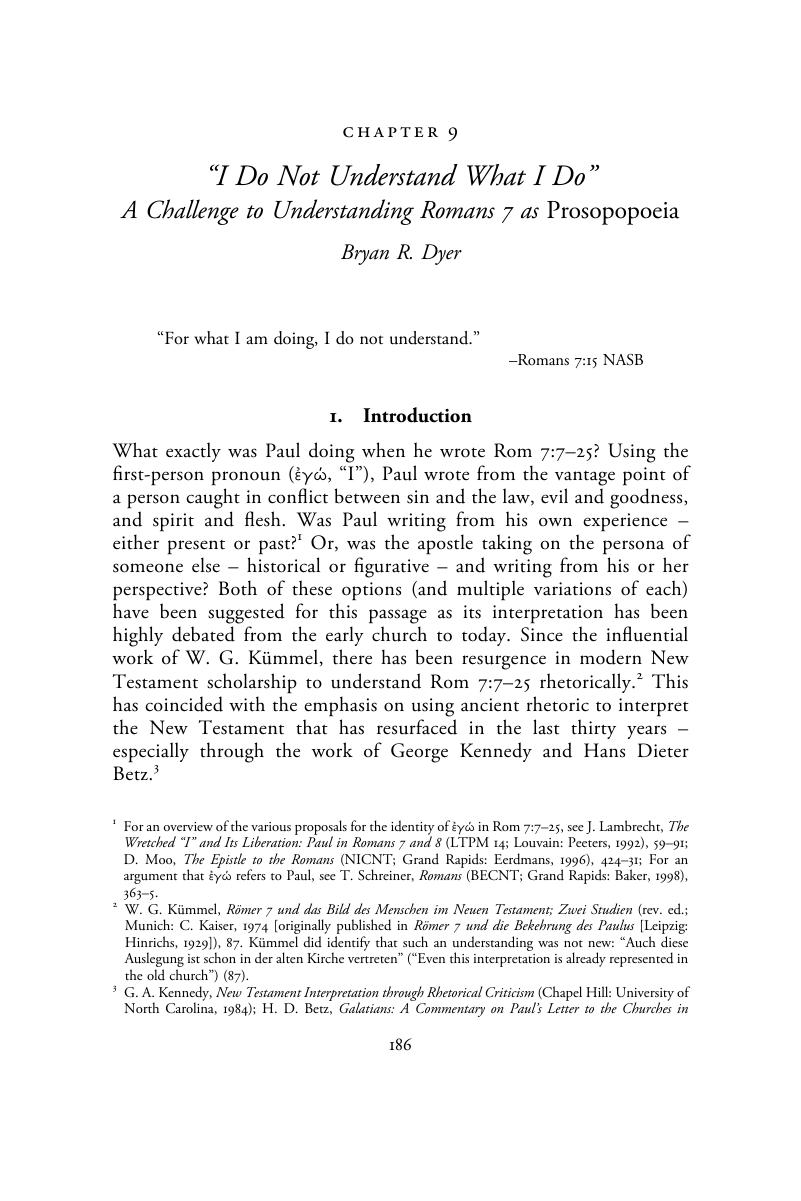Book contents
- Paul and Ancient Rhetoric
- Paul and Ancient Rhetoric
- Copyright page
- Dedication
- Contents
- Preface
- Contributors
- Glossary
- Paul and Ancient Rhetoric
- Part I History of Scholarship and Key Issues
- Part II Paul, His Education, and First-Century Culture
- Part III Issues in the Use of Ancient Rhetoric in Analyzing Paul's Letters
- Part IV Paul and Ancient Rhetoric in Practice
- Chapter 8 Paul, Classical Rhetoric, and Oracular Fullness of Meaning in Romans 1:16–17
- Chapter 9 “I Do Not Understand What I Do”
- Chapter 10 Parenesis and Peroration
- Chapter 11 Navigating First Thessalonians Employing Aristotle's Enthymeme
- Chapter 12 Appeals toLogos, Pathos, andEthosin Galatians 5:1–12
- Chapter 13 Visualizing Philippians
- Bibliography
- Ancient Sources Index
- Modern Authors Index
Chapter 9 - “I Do Not Understand What I Do”
A Challenge to Understanding Romans 7 asProsopopoeia
from Part IV - Paul and Ancient Rhetoric in Practice
Published online by Cambridge University Press: 05 November 2015
- Paul and Ancient Rhetoric
- Paul and Ancient Rhetoric
- Copyright page
- Dedication
- Contents
- Preface
- Contributors
- Glossary
- Paul and Ancient Rhetoric
- Part I History of Scholarship and Key Issues
- Part II Paul, His Education, and First-Century Culture
- Part III Issues in the Use of Ancient Rhetoric in Analyzing Paul's Letters
- Part IV Paul and Ancient Rhetoric in Practice
- Chapter 8 Paul, Classical Rhetoric, and Oracular Fullness of Meaning in Romans 1:16–17
- Chapter 9 “I Do Not Understand What I Do”
- Chapter 10 Parenesis and Peroration
- Chapter 11 Navigating First Thessalonians Employing Aristotle's Enthymeme
- Chapter 12 Appeals toLogos, Pathos, andEthosin Galatians 5:1–12
- Chapter 13 Visualizing Philippians
- Bibliography
- Ancient Sources Index
- Modern Authors Index
Summary

- Type
- Chapter
- Information
- Paul and Ancient RhetoricTheory and Practice in the Hellenistic Context, pp. 186 - 205Publisher: Cambridge University PressPrint publication year: 2016

